Alta is known as the city of the Northern Lights — but does it deserve this self-appointed title? This post is dedicated to helping you decide just that.
As one of the most northern cities in the world, Alta definitely has some solid rationale behind its claim to fame when it comes to the Northern Lights side of things. I mean, this city even has a cathedral named after them (with its architecture inspired by the dance of the lights).
But is Alta really that much better than other places in the Nordics to see the Northern Lights? Yes and no—this post will explain further.
I wrote this post after I spent four nights in Alta in February 2024. In the post, I’ll go into detail about my experience both seeing (and not seeing) the Northern lights in Alta.
I’ll also make suggestions for you based on what I personally experienced (including the tour I suggest you avoid!).
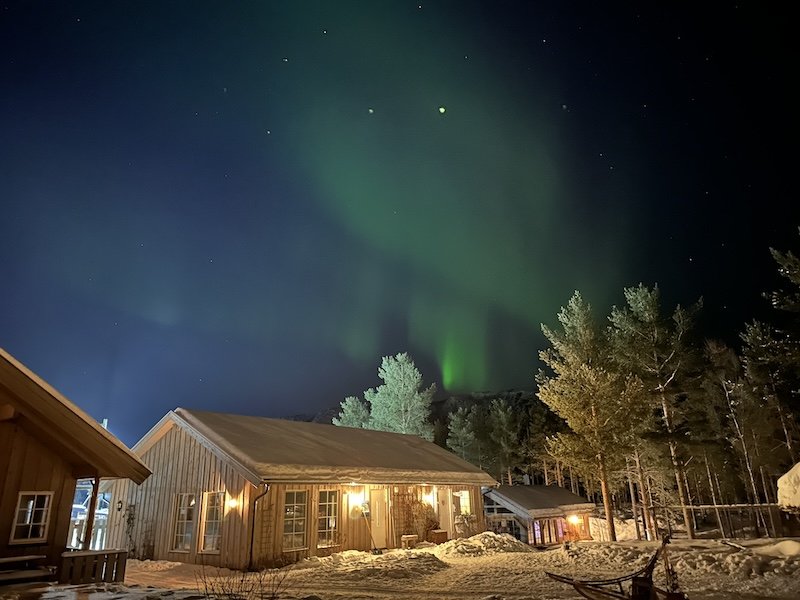
Of those four nights, I saw the Northern Lights once and went on a Northern Lights tour once—and coincidentally, those two did not coincide, as I’ll explain.
Before I describe my experience seeing Alta’s northern lights, I’ll explain more about the aurora’s importance in Alta and the best time to see the lights to help you plan your visit.
Table of Contents
The Aurora Season in Alta: Best Months & Best Time of Day
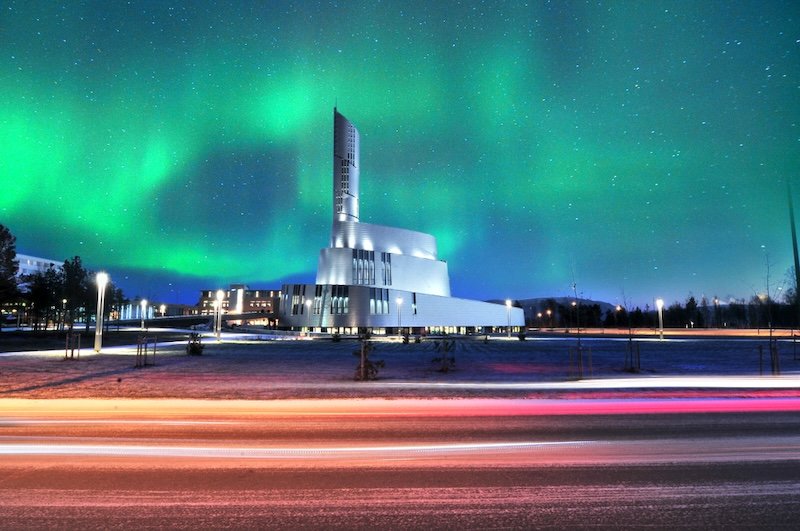
The overall aurora season in Alta runs from late September through early April, generally with the best conditions around December.
During the other parts of the year, Alta either experiences the midnight sun or is transitioning into and out of the midnight sun season, so there is not enough dark sky at any point in the day to see the aurora, even if solar wind conditions were to be perfect otherwise.
During the aurora period, you can see the aurora any time the sky is dark enough — so long as there is enough solar activity in the area and you have a clear sky.
But how do you know when the sky is dark enough? As a rule of thumb, about two hours of sunset and two hours before sunrise, the sky is dark enough for proper aurora hunting.
Also be aware that Alta is quite high above the Arctic Circle — not Svalbard high, but still quite high, 230 miles (375 kilometers) above it in fact.
This means that it experiences ‘polar night’ when the sun does not rise above the horizon for nearly two months: that’s right, there are no sunrises or sunsets at all between November 25th and January 17th!
However, unlike Svalbard’s polar night which is true 24/7 pitch darkness, the polar night in Alta is a lot brighter. Even on the longest and darkest day of polar night, the winter solstice, Alta still has a period of twilit ‘blue light’ between around 9 AM to 1:30 PM, giving you the sense that a day has passed.
I visited in early February when the sun was coming back and I had a good combination of sunlit days for activities and dark skies for aurora chasing.
Alta’s Aurora History
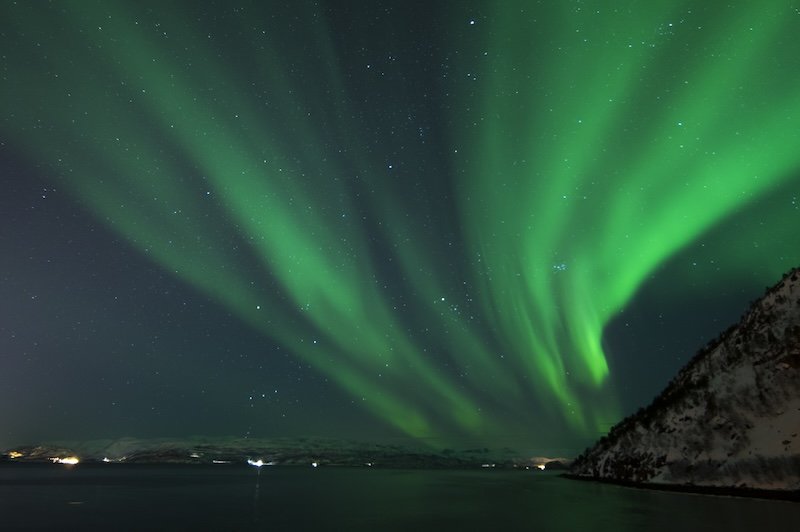
The aurora borealis was a subject of a lot of interest in the 19th century, when scientists determined that there was a prime ‘aurora zone’ where the aurora was most likely to occur. The aurora arms race began!
One particular research expedition team from France stationed in Altafjord in the 1830s, generating important data that firmly placed Alta on the map when it comes to spotting the aurora.
That data was a large part of the rationale behind the Norwegian Parliament giving approval to build the world’s first aurora observatory in Alta in 1899, on nearby Haldde mountain.
The observatory was the primary basis for Northern lights research in Norway until 1926, when the observatory was moved to Tromso, partly because of the city’s large research university.
Unfortunately, the observatory was burned down by occupying Nazi forces in 1944; luckily, a few stone walls remained. In the 1980s, the observatory was lovingly restored. It no longer works as an observatory, but now it’s actually a DNT cabin!
DNT cabins are low-cost, low-amenity cabins that you can stay at, run by an organization called Den Norske Turistforening. You have to bring your own supplies and follow all the rules of use, but they are a great way to experience Norwegian cabin culture for a very low price.
There are only six beds at the old observatory, so I recommend booking it online here and also reading all the rules if you want to stay there!
Note that there is no direct road to the cabin; it requires a 2-hour hike in the snow uphill, often during low light or dark conditions. This hike should only be undertaken if you’re an experienced winter hiker with all the gear you need for a safe overnight stay.
My Experience Seeing the Northern Lights in Alta
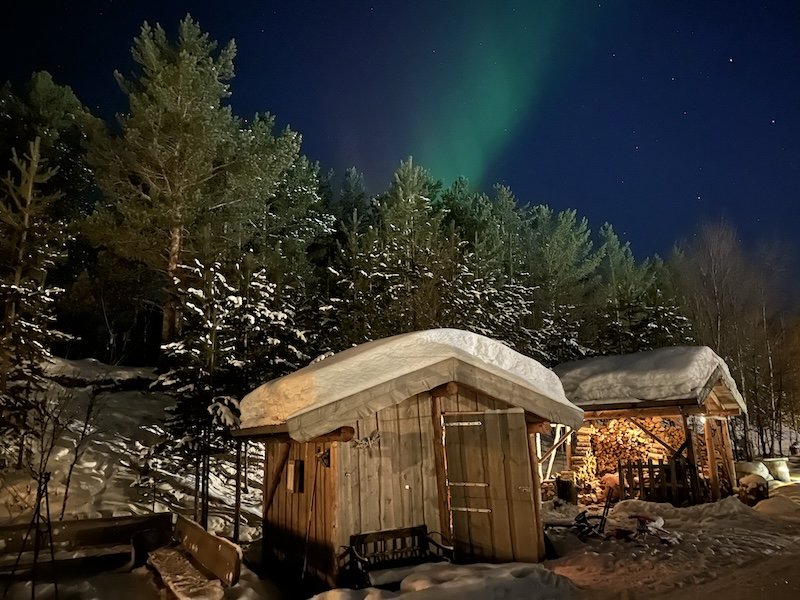
I had very bad luck with the aurora season of 2023-2024. While it was supposedly the solar maximum, I spent six weeks in the Arctic and I didn’t see as much as I had hoped.
Fellow aurora hunters confirmed the year was less spectacular than anticipated… but that’s just how life goes! Much of the best solar wind conditions occurred during the day, which meant no visible aurora.
Additionally, it was pretty cloudy and stormy this year, more so than I’ve experienced in my past winters when I spent aurora hunting.
That said, I did get to see the Northern lights in Alta! My friend Megan and I saw them on a clear, crisp, cold night after having a marvelous fine-dining tasting menu at Trasti & Trine, a lovely boutique hotel, restaurant, and dog sled operator. After we finished dinner, we went out to look at the sky. The lights were absolutely spectacular!
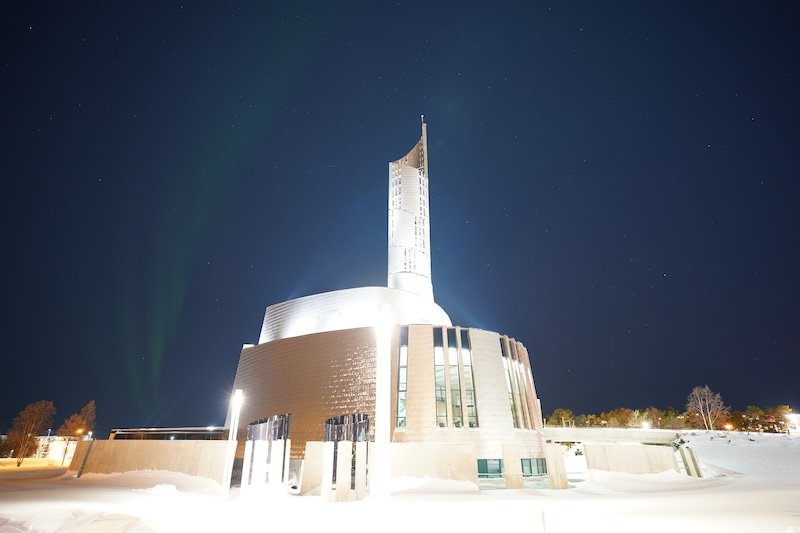
After snapping pictures there, we tried to high-tail it back to Alta city center to take pictures of the Northern Lights cathedral with the aurora behind it. We took one or two photos of the Northern lights appearing behind the cathedral before they disappeared into the night.
Well, we had an aurora tour booked the following night. Unfortunately, this was the worst aurora tour I have ever been on.
While the tour operators of course cannot help it if the lights do not come, sadly, our tour guide was really inexperienced and did not know how to chase the aurora.
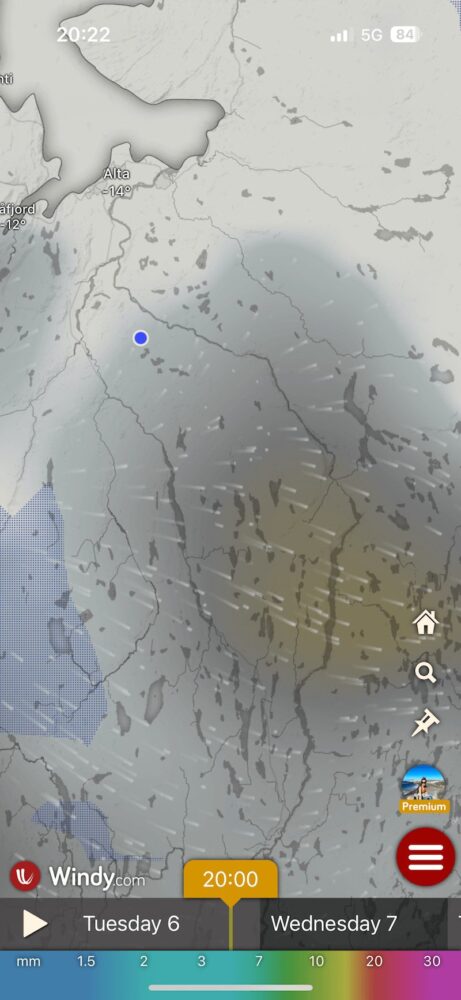
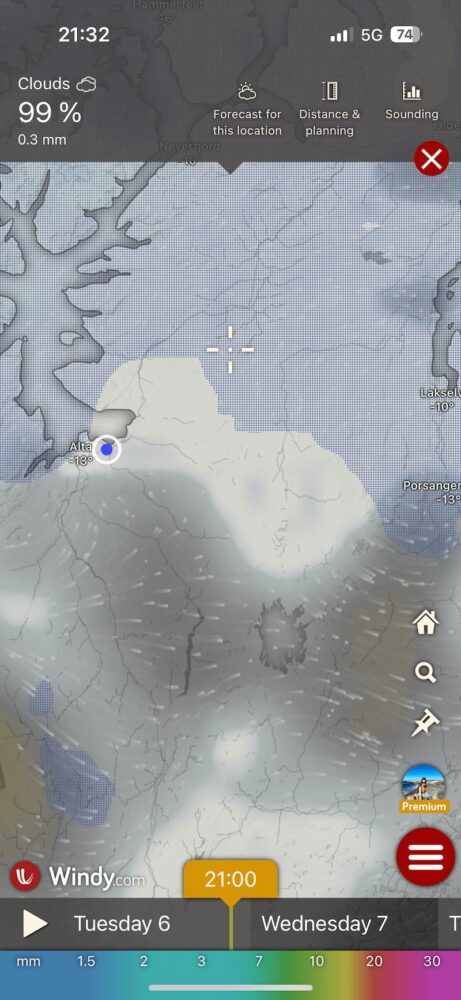
He stayed far too long in places with 100% cloud cover, did not pursue less-cloudy parts on the map (which we showed him on our cloud-tracking app, Windy, which I highly recommend you download before your trip).
Of course, there’s no guarantee we would have seen the northern lights had we followed our weather app, but we would have at least had a shot. We stood no chance with the tour the way it was conducted.
He made a series of increasingly questionable decisions… including choosing to drive headfirst into a snowstorm and start a bonfire in a parking lot.
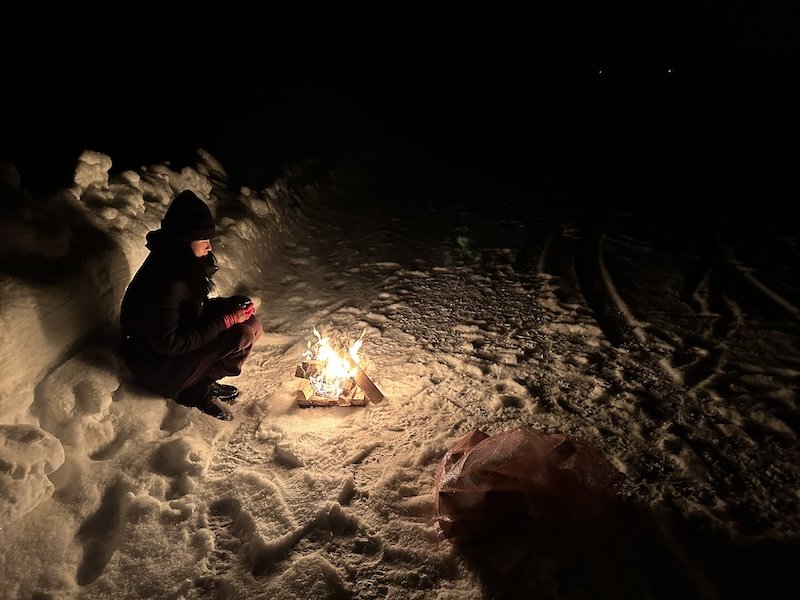
We found ourselves wishing we had just chased the aurora ourselves, as we had rented a car in Alta for maximum freedom.
We did choose to do a tour just to see if we could recommend it to our readers… and unfortunately, we found that we couldn’t recommend this tour in good faith. If you want to see what tour, either to take it or avoid it, the one we used was this tour.
However, I will say that the tour company we went with, Æventyr, saw our negative reviews of the tour and, without any prompting or communication, chose to refund us half of the amount of the tour.
I appreciated their token of goodwill, and I would consider taking a different tour, like their whale-watching tour, with them. They seem to be a good company that just happened to make a bad hire (or didn’t offer enough training).
Seeing the Northern Lights on a Tour in Alta
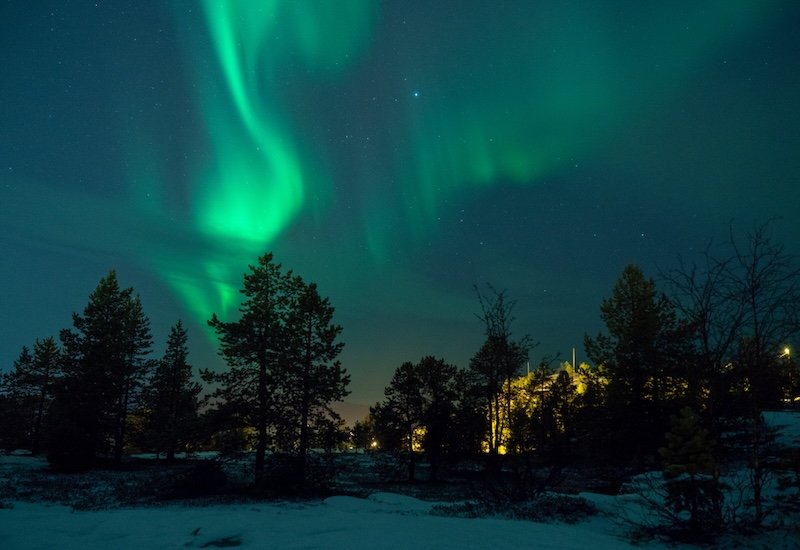
There are several different ways you can try to see the Northern lights. There are two schools of thought and I’m not really sure which one I subscribe to. Both have their merits.
The first school of thought is to take a dedicated aurora-chasing tour by minibus. This is how you will most likely see the aurora (assuming a competent guide and well-run company) and this is what I did.
However, if you are unlucky and have an aurora tour guide that does not actively track weather conditions and brings you to a few spots regardless of the conditions at those places, there’s not much that you will gain from this kind of tour.
My tour brought us to a few pre-determined places, but we did not actively track or chase the aurora. If you want to try a different tour and hope it’s different, I’d suggest this one instead as it has some really good reviews (that said, ours did too when we booked).
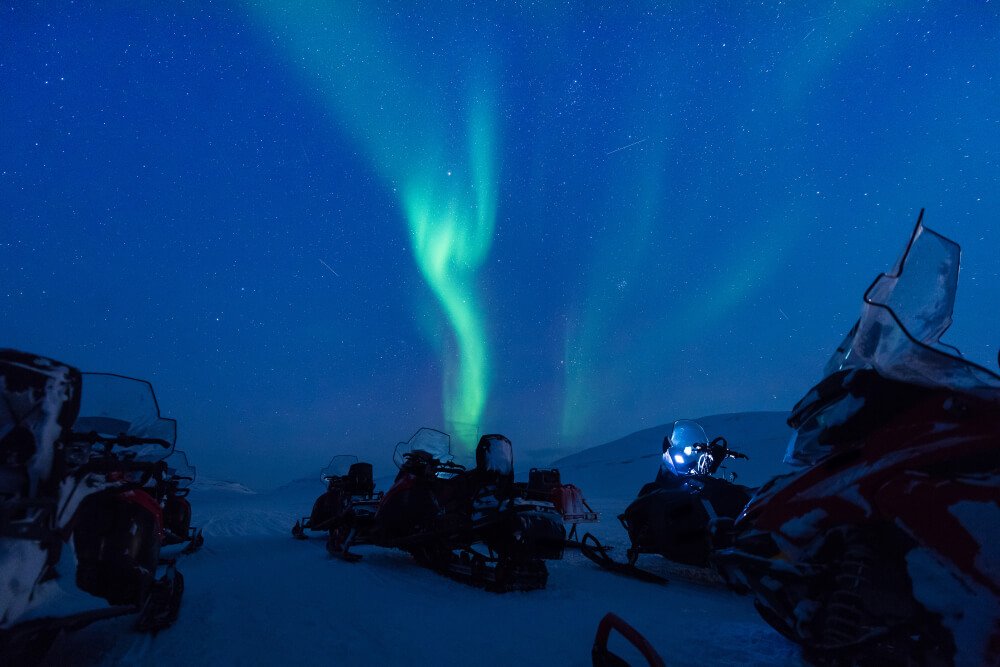
The other school of thought is to do an activity you would enjoy no matter what, but do it at night and hope you get to see the aurora as a bonus!
The pro of this is that you will have fun no matter what. The con is that you can’t be sure you’ll see the Northern lights where you are, and you may be locking yourself into a cloud-covered area while doing an activity when the aurora is active elsewhere.
If possible, you should split the difference and do both, but I understand that it is an expensive proposal.
If you can afford it, I would spend one day on a van tour of the aurora and one day doing a fun activity like snowmobiling or dog sledding under the northern lights.
Of the two, I recommend snowmobiling because you can go further and faster. Additionally, dog sledding tours follow a set path to make running their tours easier (and safer for the dogs, especially in the dark).
On the other hand, snowmobiling tours may have a few routes they typically know well and go, but it is more likely that your tour guide will adjust for the best chance of seeing the northern lights.
Seeing the Northern Lights Independently in Alta
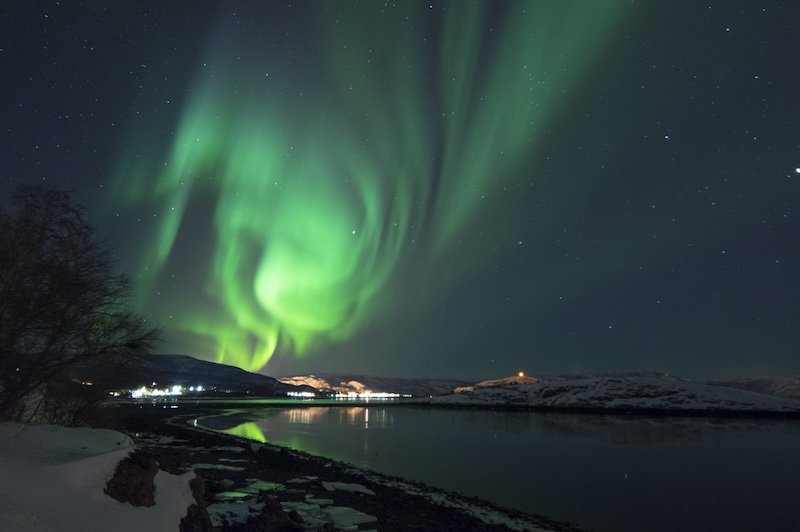
You can definitely try to see the Northern lights independently in Alta. However, you really need to rent a car for this, as the most important factor in chasing the Northern lights is the ability to change course quickly and follow the clear sky.
Also, it’s worth knowing that Alta is a strangely laid-out city, with the city center inland of the fjord. You’ll want to be able to drive to the outskirts of Alta both for better photo compositions and for an increased chance of seeing the lights.
I’ll list a few places you can drive to in order to look for the aurora, but none of them are guaranteed. While I stand by these suggestions, I also strongly suggest that you check out the Windy app (free version is fine!) and go to the places where it predicts a lack of cloud cover.
- Alta Museum: It’s located on the fjord, which is a beautiful setting for photos, but since it’s coastal, it may be more socked-in with cloud cover. I still highly recommend it if you have a clear night!
- Trasti & Trine: This boutique hotel and restaurant more inland than Alta, and it’s a delicious place to enjoy a meal. This is where we saw the lights. However, the composition here isn’t the most beautiful as other places can be as there can be a lot of trees in the way. However, there is a path into the forest that you can walk if you are staying here overnight. Since we were just dinner guests, we didn’t want to intrude too much.
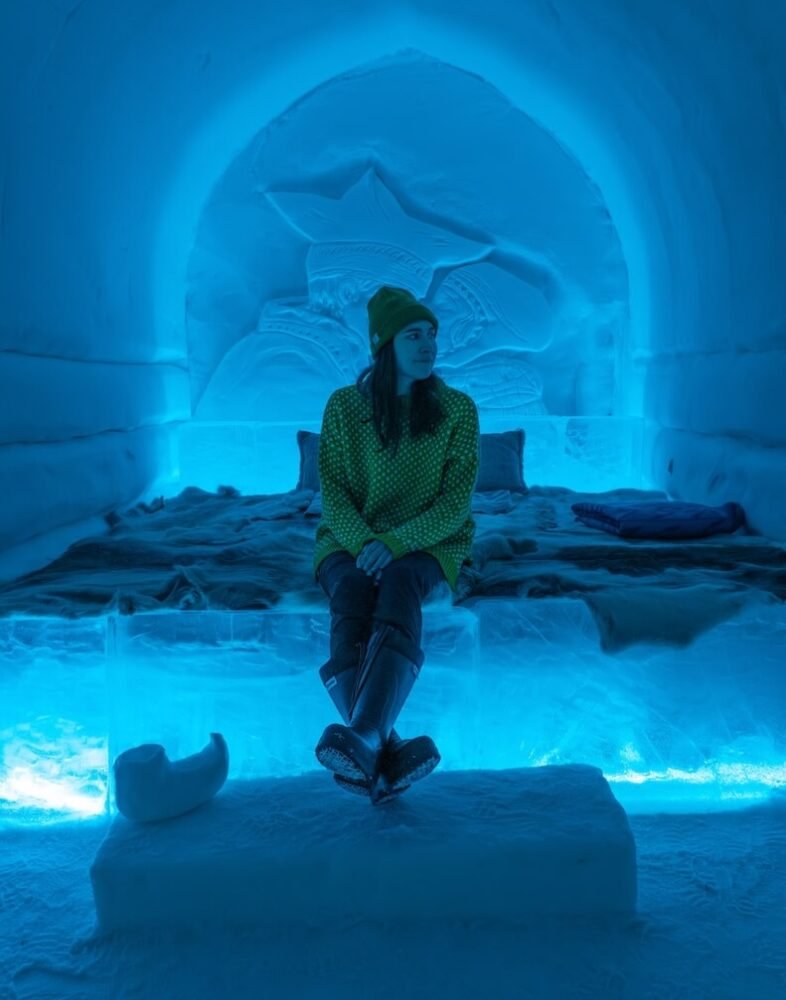
- Sorrisniva Arctic Wilderness Lodge: This is a really fun place to visit whether or not you see the lights! While there, you can also visit the incredible Sorrisniva Igloo Hotel, so an outing there won’t waste time, even if you don’t see the lights. An entrance ticket is 350 NOK or about $32 USD and it’s fully worth it.
- Raipasveien and Holmen Streets: If you cross the Alta River right where you find the Sami Siida restaurant, you’ll head into an area that has a lot of Alta’s more rustic accommodations, such as GLØD Aurora Canvas Dome and Alta River Camping. You could drive this loop of a road and try to find some cool places to stop!
Allison Green is a former teacher who has been travel blogging since 2016. She has a Masters in Teaching and a B.A. in English and Creative Writing. Her blog posts merge her background as an educator with her experience traveling to 70+ countries to encourage ethical, meaningful travel. She has been a speaker at the World Travel Writers Conference and her writing, photography, and podcasting work has appeared in National Geographic, CNN Arabic, CBC Canada, and Forbes, amongst others. Now a full-time traveler, she has lived in Prague, Sofia, New York City, and the San Francisco Bay Area.